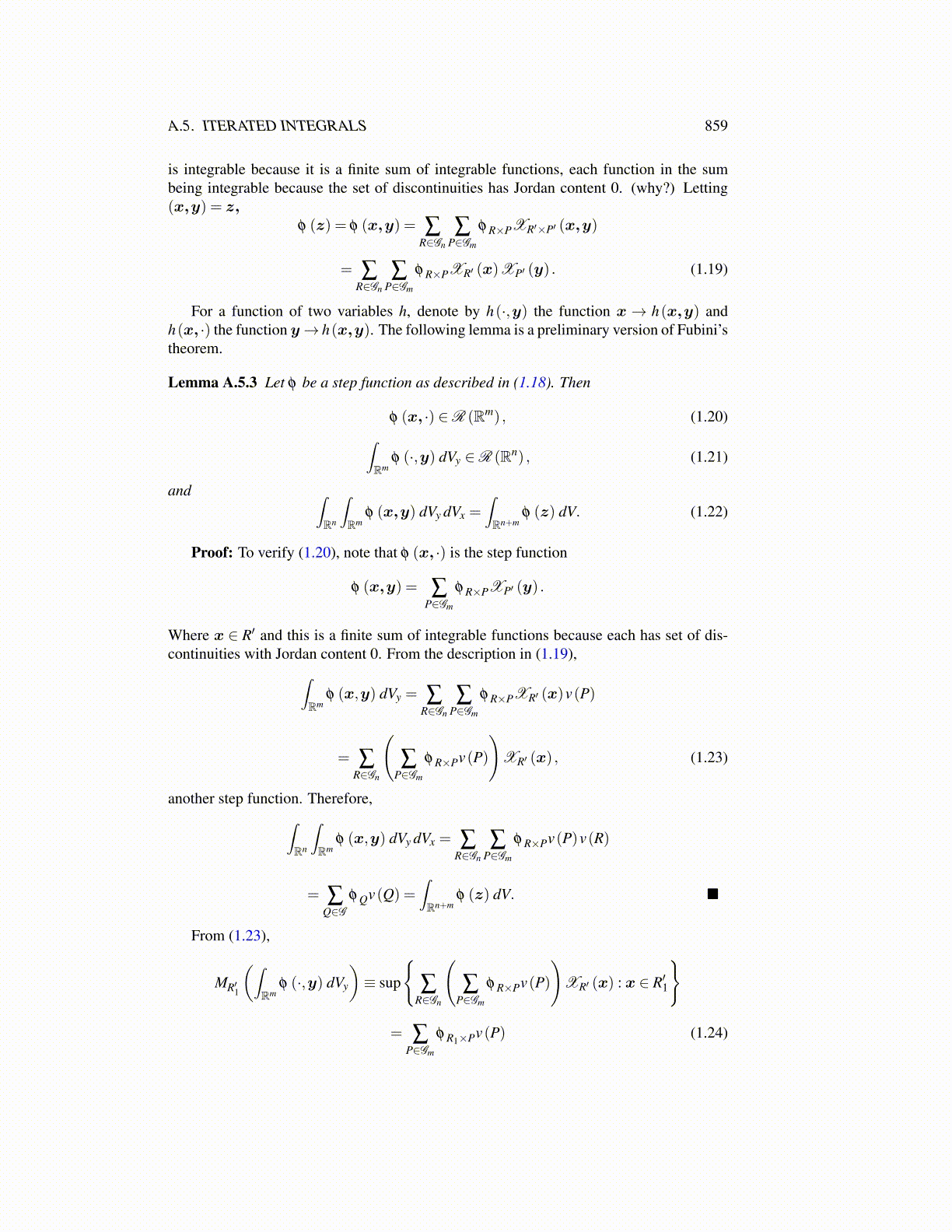
A.5. ITERATED INTEGRALS 859
is integrable because it is a finite sum of integrable functions, each function in the sumbeing integrable because the set of discontinuities has Jordan content 0. (why?) Letting(x,y) = z,
φ (z) = φ (x,y) = ∑R∈Gn
∑P∈Gm
φ R×PXR′×P′ (x,y)
= ∑R∈Gn
∑P∈Gm
φ R×PXR′ (x)XP′ (y) . (1.19)
For a function of two variables h, denote by h(·,y) the function x → h(x,y) andh(x, ·) the function y→ h(x,y). The following lemma is a preliminary version of Fubini’stheorem.
Lemma A.5.3 Let φ be a step function as described in (1.18). Then
φ (x, ·) ∈R (Rm) , (1.20)∫Rm
φ (·,y) dVy ∈R (Rn) , (1.21)
and ∫Rn
∫Rm
φ (x,y) dVy dVx =∫Rn+m
φ (z) dV. (1.22)
Proof: To verify (1.20), note that φ (x, ·) is the step function
φ (x,y) = ∑P∈Gm
φ R×PXP′ (y) .
Where x ∈ R′ and this is a finite sum of integrable functions because each has set of dis-continuities with Jordan content 0. From the description in (1.19),∫
Rmφ (x,y) dVy = ∑
R∈Gn
∑P∈Gm
φ R×PXR′ (x)v(P)
= ∑R∈Gn
(∑
P∈Gm
φ R×Pv(P)
)XR′ (x) , (1.23)
another step function. Therefore,∫Rn
∫Rm
φ (x,y) dVy dVx = ∑R∈Gn
∑P∈Gm
φ R×Pv(P)v(R)
= ∑Q∈G
φ Qv(Q) =∫Rn+m
φ (z) dV. ■
From (1.23),
MR′1
(∫Rm
φ (·,y) dVy
)≡ sup
{∑
R∈Gn
(∑
P∈Gm
φ R×Pv(P)
)XR′ (x) : x ∈ R′1
}
= ∑P∈Gm
φ R1×Pv(P) (1.24)